- Home
- Paullina Simons
Six Days in Leningrad Page 24
Six Days in Leningrad Read online
Page 24
The doctor, the maid, the nurse and the cook stood behind Nicholas. The youngest duchess, Anastasia, held the family poodle in her arms.
Eleven more guards stepped into the thirteen by eleven foot room. There were now twenty-four people in it, twelve of them with weapons. The chief guard took out a piece of paper and read aloud that by the order of Lenin himself, Nicholas and his family were to be executed. Nicholas turned to his family and said, “What? What?” The chief guard repeated himself, then took out his pistol and shot Nicholas in the head. Empress Alexandra and her daughter Tatiana started to cross themselves but there was no time. The other guards raised their rifles and opened fire on the rest of the family. The guards had been ordered to shoot for the heart rather than the head, to minimize the flow of blood. They fired more than one hundred and fifty shots. Many of the guards went partially or completely deaf.
Suddenly the guards noticed that the bullets were ricocheting off three of the girls. The frantic men were stunned to discover that the girls were still alive. Stepping closer, the guards began to shoot at point blank range, yet the girls kept moaning and trying to crawl away. The maid even grabbed one of the rifles from the guards as she edged along the wall to the door. Now hysterical, the guards turned their bayonets on her and on the duchesses. Eventually the girls stopped moving.
The massacre had taken twenty minutes.
Later in the woods after the guards undressed — and touched — the duchesses, they discovered over eighteen pounds of diamonds sewn into their breastplates like armor. The bullets had ricocheted off the diamonds.
Except for the jewels, all the personal belongings of the family and their servants were placed in a heap and burned. The bodies were hacked to pieces with axes, doused with sulfuric acid and gasoline, and burned in a mining shaft. The following day, the executioners came back, retrieved what was left of the bodies and buried them in another mining shaft, which was then blown up.
It took seventy years to locate the remains. All except the Duchess Tatiana and Tsarevich Alexis had been identified.
I wandered around the cobblestones, thinking of the Romanovs lying undiscovered for eighty years after such a death, unburied, uncommended to God. But not unmourned, I thought, as I came up behind a row of press agents, photographers, writers, all straining their necks to see the double doors. They were beautiful doors, made of solid wood — oak maybe.
“What are we looking at?” I asked a tall thin man with a camera. Really, I just wanted him to move out of my way so I could see, too.
He turned around, gave me a haughty look, and said in Russian, “For the dignitaries to arrive.”
“Oh.”
Finding my father again, I asked, “Papa, when are the Romanovs going to be carried through those doors?”
“No.” Viktor R. stepped in. “They’re already inside the church. Remember? They were carried here yesterday.”
The day before, the royal remains had arrived by plane from Ekaterinburg, where they had lain on a metal slab in a laboratory since their discovery a few years earlier. Quietly they rode through the St. Petersburg streets toward their overdue burial.
Again politics and poverty ruled. There was not enough money in the city coffers to hire limousines to carry all five of the caskets; there was only enough money for one — to carry the Tsar’s remains.
“How did the rest get to the cathedral?” I asked Viktor R. when he told us this story. My father had walked away, disgusted. “By bus?”
“No, by other means,” was Viktor R.’s evasive answer.
I had seen horses on the Palace Square, waiting patiently for amorous couples to rent a carriage for a half-hour ride through St. Petersburg. Why couldn’t the city rent a horse and carriage to carry the coffins to Peter and Paul’s? Viktor R. shrugged. It’s more complicated than that, he told me. Why? Princess Diana was pulled by several horses. Why couldn’t the Romanovs be pulled by just one?
That was England. This is Russia, he said.
So the Tsar was driven slowly through the city streets in a black stretch limo. Only a few hundred people turned out to watch him pass by. There was a bigger turnout for O.J. Simpson’s slow-motion car chase on Interstate 5 in Los Angeles.
During the press accreditation, we had been told that the funeral service would start at 11:00 in the morning. Yeltsin had changed all that. He was supposed to arrive at 11:00 and make a speech; the funeral would start at noon.
I had been standing since 10:30, in high heels on uneven stones. My back hurt, my legs. My stomach. I was not in prime spirits.
Surprisingly, there were toilets in the yard. Port-a-Potties, four of them. They had been brought in for the dignitaries, because, although Peter and Paul’s Fortress is a national treasure, a museum, a prison, a shrine, there are no permanent toilets in it.
The Russian choir, when it started to sing, had a lovely, melancholy tone. I wished I could smell the incense. Outside, we were doing nothing, saying nothing. We had no role. We just stood. My father smoked more than usual. I could tell he was frustrated. This momentous occasion, this once-in-a-lifetime moment, thousands of journalists from all over the world, piled together on the cobblestones and ignored.
When Yeltsin finally arrived — at noon, by helicopter — he addressed the gathered dignitaries inside. “This is the time for repentance,” we heard over the loudspeaker.
I wished there were a question-and-answer session. I wanted to ask him about Ipatiev House. Yeltsin had ordered it razed in 1977 because there was such a push to canonize the martyred Romanovs, Ipatiev House had become a place of pilgrimage for many Russians. Yeltsin, who had once been an avid Communist, figured that if there were no Ipatiev House, there would be no pilgrimage. He was wrong.
“As a human being and as President,” he continued, “I could not not be here.”
Then the microphone went dead.
We heard nothing more for the rest of the funeral. Which was only fitting because we could see nothing, either. Although a bank of televisions had been set up — twenty-five small screens in all, five rows of five — so that we could watch what was happening inside, we could have been watching reruns of I Love Lucy, for all we could see in the hazy sunlight.
It was hot on the cobblestones. Everything on my body hurt, my stomach worst of all. A gray-haired Frenchman in front of me had dandruff that flaked off in the breeze in my direction. I moved away. I didn’t want to see Yeltsin that badly.
The women in the crowd were dressed in too-tight clothes, even the career women. Especially the career women. Too-tight clothes that didn’t match. And they smoked. Everybody smoked.
There was a small boathouse next to the church. I sat down on its steps. It was the hottest day yet, 80°F and humid. There was no more Russian music. No more Yeltsin. Just a bunch of suited-up people with cameras, clamoring to glimpse the closed oak doors of a church.
This was the Romanov funeral eighty years in the making.
Later Newsweek ran an article on the burial of Tsar Nicholas II, and People magazine had one, too. I read these articles and felt a sense of propriety about that Friday morning. I wanted to say: I was there. I was there when the Tsar was buried. I saw . . .
Nothing. Wait: that’s not true. I saw the courtyard. What I didn’t see was what the rest of Russia saw beautifully on television. Or what the rest of the world wrote about.
They saw the meaning of the Romanovs to history: the power of repentance, the virtue of forgiveness. I didn’t see any of that. I saw a courtyard, and sun, and the backs of the crowd. The only excitement was when the governor of Krasnoyarsk, Aleksandr Lebed, emerged from the church and walked quickly through the courtyard. He was wearing a suit, and he looked distinguished. I saw that much. Dozens of microphones were thrust in his face.
“Quick, quick,” my father urged. “Climb up here, take a picture of Lebed for Dedushka.”
I climbed up. I couldn’t get a picture of him. By the time I balanced myself atop a divider and focused th
e Pentax, all I saw was his back.
I should have realized the funeral was going to be much like the accreditation process. In literature, they call it foreshadowing.
Finally Papa said, “Paullina, have you seen enough? Do you want to go?”
“Yes,” I instantly said, and thank you, God.
But it wasn’t about us. It wasn’t about Viktor R., or the press, or Newsweek’s lofty musings. It was about a family being buried.
I wish we could have seen it.
We left at 1:30 p.m., with the funeral still in full swing. Or not. Who could tell?
BETWEEN THE FUNERAL AND THE HERMITAGE
We dropped off Viktor R. at Radio Liberty. While we waited for our driver Viktor to come back downstairs, my father read to me from his newspaper: world weather and Yankees stats. Finally our driver reappeared. “Where to now?” he asked us.
“Viktor,” my father said, “what do you suggest?” He actually asked someone’s opinion! “It is our last day in Leningrad. Tomorrow we drive to the Karelian Isthmus. We need to make today count.” He turned to me. “Do you want to go to the Defense of Leningrad Museum? It’s near the Field of Mars.”
“Yes,” I said.
“Or do you want to go to the Hermitage?”
“Yes,” I said.
“We can also take a walk along the Neva to the Summer Garden. You can’t leave Leningrad and not see the Summer Garden.”
“Yes,” I said.
Viktor studied me briefly. “Paullina, I don’t think you should go to the Defense of Leningrad Museum.”
“No?”
“No. You’ve seen too much, you’re overwhelmed.”
“Yes,” I said.
“You have been bombarded with too much information. I can see it’s becoming hard for you to absorb it all. To process it.”
“Yes.”
“The museum is overkill. You will remember only five percent of what you see. What’s the point? I suggest the Hermitage.”
“Why not both?”
“Seeing the Hermitage in one hour,” Viktor said, “is like not seeing it at all. You’ll barely have time to pay and go up the marble staircase.”
“Plina, here’s a plan,” my father said. “We go back to your hotel, you change, so you’re more comfortable. Then we walk to the Hermitage, and spend a couple of hours there.”
“Three,” said Viktor. “At the very least three hours.”
“Okay, okay, three. Then we walk along the Neva to the Summer Garden, and afterward I will show you the courthouse where I was tried and convicted. Then we will go and have our last dinner in Leningrad. What do you think? Is that a plan?”
“Yes,” I said.
But what about Yulia? I wanted to ask. Was I really going to leave Leningrad without calling Yulia?
DANAË
At Grand Hotel Europe I changed from my taupe suit into a black shirt, white skirt, and sandals. I looked longingly at my bed, wishing I could fall into it and sleep until it was time to leave Russia.
We walked in the afternoon sunshine to Café Nord, where we ate smoked salmon in an open sandwich. I had cream cake and a bitter espresso. I picked at my food. I didn’t like the espresso, didn’t like the salmon, didn’t like the bread. I was feeling glum inside and out.
“Are you feeling all right?” Papa suddenly asked, a remarkable question coming from my usually oblivious father.
“Yes, thank you,” I replied. I wasn’t about to ruin our last day together, just us, by whining about my stupid stomach and my stupid feelings.
In the underpass from one side of Nevsky to the other, a beggar woman sat with her infant. Another beggar woman sang Russian songs I’d never heard before. Farther along, two men and a young boy played the guitar.
Back above ground, we headed down Nevsky on the way to the Hermitage. We walked past a sign that said “THE INTER-CITY PHONE BUILDING.”
“What is that?” I asked my father.
“It’s the Inter-city Phone Building,” he replied. “When you wanted to call another city from Leningrad, you came here.”
“Oh,” I said, thinking, how quaint and cute, how good to know this, how handy this information would be in my Bronze Horseman novel. How provident that we were passing this ancient relic of the past. “How long ago was that?”
“Until two years ago,” replied my father. “They finally closed it in 1996.”
On we walked through the Triumphal Arc of General Staff, this time in daylight. Beyond that we saw Palace Square, the Alexander Column, and the glistening green of the Winter Palace.
We stopped for a few minutes before the arc and just stood. What my father was thinking I don’t know. I didn’t ask. I was thinking that I had no room left inside for impressions — not of beauty, not of pain, not of nostalgia. I was full up.
But the Alexander Column was worth some feelings. Built by Nicholas I for Alexander I, who saved Russia from Napoleon, it took three years to extract the seven hundred-ton piece of granite from the Karelian Isthmus.
As we walked past it, I touched it with my hands. It was smooth and cold.
“What a square, huh, Papa?”
“Humph,” he said, as though to say, Well, of course. What did you expect?
But it was more than that. The French feel the same way about Paris, and I know the Italians feel the same way about Rome, and the British, having fought Hitler practically single-handed from 1939 to 1941, certainly feel this way about their blitzed but still standing London.
My father and I are not French; we are not Italian; we are not British. We are Russian, and what we feel when we touch the soul of our city we don’t feel for anywhere else in the world, no matter how historic, no matter how meaningful. We feel it for Leningrad, hero-city, the Calvary of Russia’s war with Hitler.
We walked on, to the Hermitage.
The Hermitage is one of the greatest museums of the world, housed inside a palace so opulent it defies comprehension.
“Nothing on this scale could ever be built today,” my father told me. The Winter Palace, the Leningrad residence of the Tsars, is an immense rectangular edifice of green stucco, built around an enormous interior courtyard. The building stretches nearly a kilometer along the Neva. It was built by Rastrelli with lavish Baroque gusto for Elizabeth I in the late eighteenth century, but the art collection dates back to the early 1700s, when Peter the Great bought two paintings by Rembrandt that still hang in the Dutch Room.
Today, the Hermitage is home to a thousand years of art and collectibles, and twenty-three more Rembrandts.
“Can we see all of it?” I asked my father.
“Yes. It will take us nine years, and we will only be able to spend thirty seconds on each exhibit, but yes.”
“Huh,” I said slowly. “What if we spend fifteen seconds on each? Listen, some I don’t really want to see.”
“Wait till you see the doors,” my father said. “You won’t believe the doors.”
“Can we see Picasso?”
“We won’t have time. It’s already three. We’ll try. Wait till you see the doors.”
Each door — twenty feet high, handcrafted from solid walnut and then gilded — must have cost a million dollars, and there were hundreds of them.
We decided to limit ourselves to a couple of halls, a couple of throne rooms, one coffin room, a little Italian art, and one Rembrandt.
“Oh, and we must see the Fabergé room,” my father said.
“I hear he makes nice eggs.”
For some reason my dad didn’t find me funny as we walked up the Grand Staircase.
He led me to one of the windows in the Catherine the Great Hall on the second floor. “I want to show you something. Do you know why the curtains are drawn?”
“To block out the sunlight?”
He shook his head. “I’ve been coming to the Hermitage for fifty years, since 1946. Today I haven’t looked outside yet, but I just want to show you that I’m right about this. What do the Americans say? Th
ey say, the devil is in the details. Check out the courtyard.”
He pulled aside the curtain. Down below, in the rear courtyard, were several dump trucks loaded with garbage. Old chairs, dirt, mess, weeds, rusted pipes. In the rear courtyard, the decorative lions on the windows were not gilded and restored as they were on the front walls. It looked like the backyards of Shepelevo, albeit on a larger scale.
“Fifty years and they still haven’t moved those pipes,” my father said. “On one side of the Great Hall, a beautiful garden. A fantastic garden built on the second floor. Imagine building a garden with earth and trees on the second floor. But on the other side of the hall, this. That’s Russia for you. Nothing has changed.”
“Why don’t they clean it up?”
“Why? Why should they? They just keep the curtains drawn.”
My father was quite taken by Catherine II’s second-floor garden, “with lilacs!” He had mentioned lilacs a few days before, when we passed the Field of Mars, when he told me about the time he had cooked meat over the eternal flame. “It was spring,” he’d said. “And the lilacs were blooming.”
My father is partial to lilacs and saxophonists.
In the Italian section we found a sculpture by Michelangelo, called his “grouchy boy,” two Raphaels and two da Vincis.
The Fabergé exhibit had unfortunately closed an hour early, but the Gregorian Hall was quite a sight with splendid gold columns and veined marble floors.
When we bought our tickets for the Hermitage, the sign said, if you want to take pictures, please pay now, five dollars per picture. Eight dollars for video. Well I didn’t know how many pictures I was going to take. Maybe none. So I didn’t pay. But when I saw the Gregorian Hall, I knew that I had to take a picture for my Natasha, to show her the famous hall where Duchess Anastasia danced with her daddy in the animated film Anastasia.
No, my own daddy said. You cannot take a picture. You didn’t pay.
Thinking he was joking, I turned on the camera. My father took it out of my hands and turned it off.

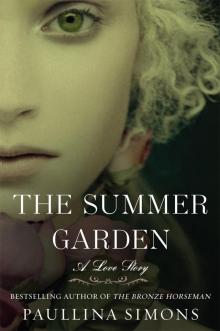 The Summer Garden
The Summer Garden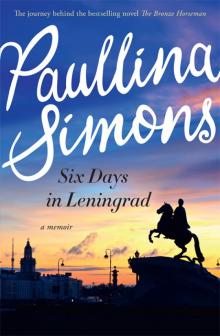 Six Days in Leningrad
Six Days in Leningrad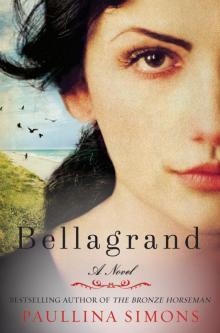 Bellagrand
Bellagrand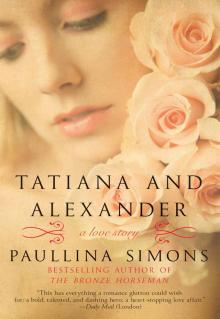 Tatiana and Alexander
Tatiana and Alexander Road to Paradise
Road to Paradise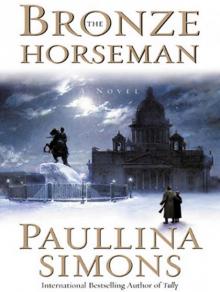 The Bronze Horseman
The Bronze Horseman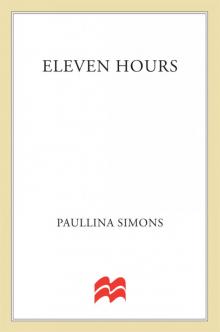 Eleven Hours
Eleven Hours Tatiana's Table: Tatiana and Alexander's Life of Food and Love
Tatiana's Table: Tatiana and Alexander's Life of Food and Love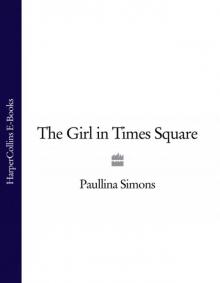 The Girl in Times Square
The Girl in Times Square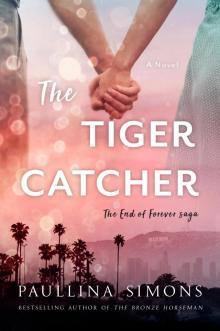 The Tiger Catcher
The Tiger Catcher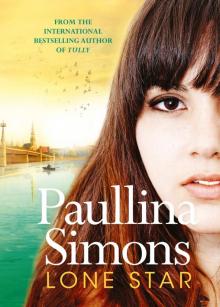 Lone Star
Lone Star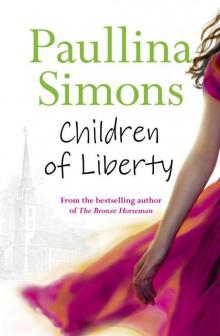 Children of Liberty
Children of Liberty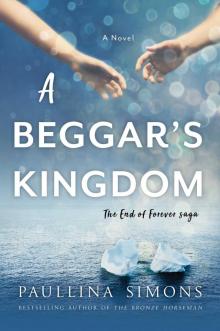 A Beggar's Kingdom
A Beggar's Kingdom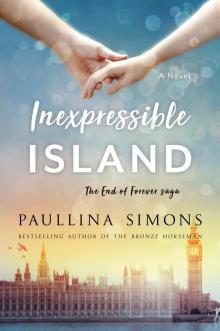 Inexpressible Island
Inexpressible Island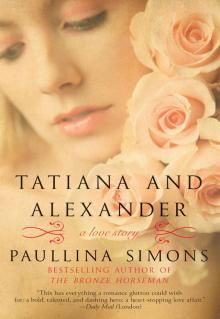 Tatiana and Alexander: A Novel
Tatiana and Alexander: A Novel Tatiana's Table
Tatiana's Table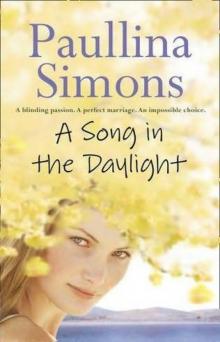 A Song in the Daylight (2009)
A Song in the Daylight (2009)